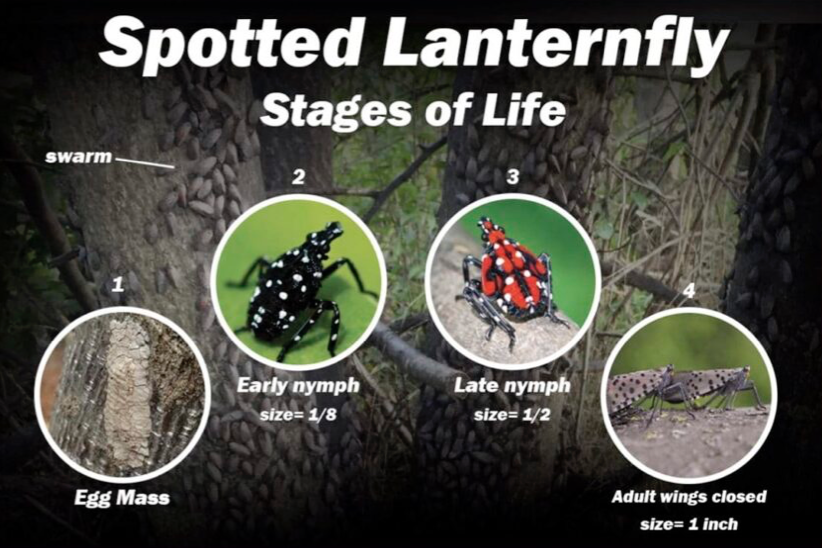
SPOTTED LANTERN FLY TREATMENT
Have You Spotted Me?
Let Us Protect Your Property!!
The SPOTTED LANTERN FLY was first found in southern Berks County in 2014. This invasive pest from Asia has moved into several surrounding counties and is active throughout most of our service area.

The nymph stage of this pest can be very damaging to ornamental landscapes as well as orchards and vineyards. This is a “sucking insect” which feeds on sap running through vascular systems of plants. This activity weakens and wounds the plants, leaving trees and crops vulnerable to disease. This new pest is becoming an issue for many area homeowners. The feeding activity of the nymphs leaves behind a sticky residue that attracts bees and other insects. The residue also promotes the growth of black sooty Mold which can cover patios, cars, anything under infested trees. After hatching, spotted lanternflies only take about two months to reach adulthood, so it does not take long for the egg masses on your trees to turn into a giant swarm. The sheer numbers of adults can be quite unsightly covering walls, decks, play areas, etc. in a fashion like Stink Bugs. Fortunately, early control attempts have proven to be successful. We are currently offering a great three step approach to controlling this pest.
How Does It Work?
Non-invasive, systemic basal trunk sprays are formulated and are sprayed on the lower five to six feet of the trunk. The product then penetrates the bark and is transported systemically throughout the tree.
Application Time Fame (Never Too Late to Get Started)
Treatment One: Early March through May
Treatment Two: Late May and June
Treatment Three: Late summer through fall
Helps us control the spread of this potentially devastating pest!
Advantages of the Basal Trunk Spray
This method is highly effective against a broad spectrum of ferocious and invasive pests, including Q- and B-biotype whitefly, hemlock woolly adelgid, emerald ash borer, mealybug, leafminer, fungus gnat, black vine weevil, glassy-winged sharpshooter, armored and soft scale and lacebugs which are some of the most costly pests that affect, trees, shrubs and herbaceous ornamentals in the lawn and landscape.
✓ Non-invasive – does not wound trees
✓ Rapid control – 1-3 weeks for most pests
✓ Long-lasting control
